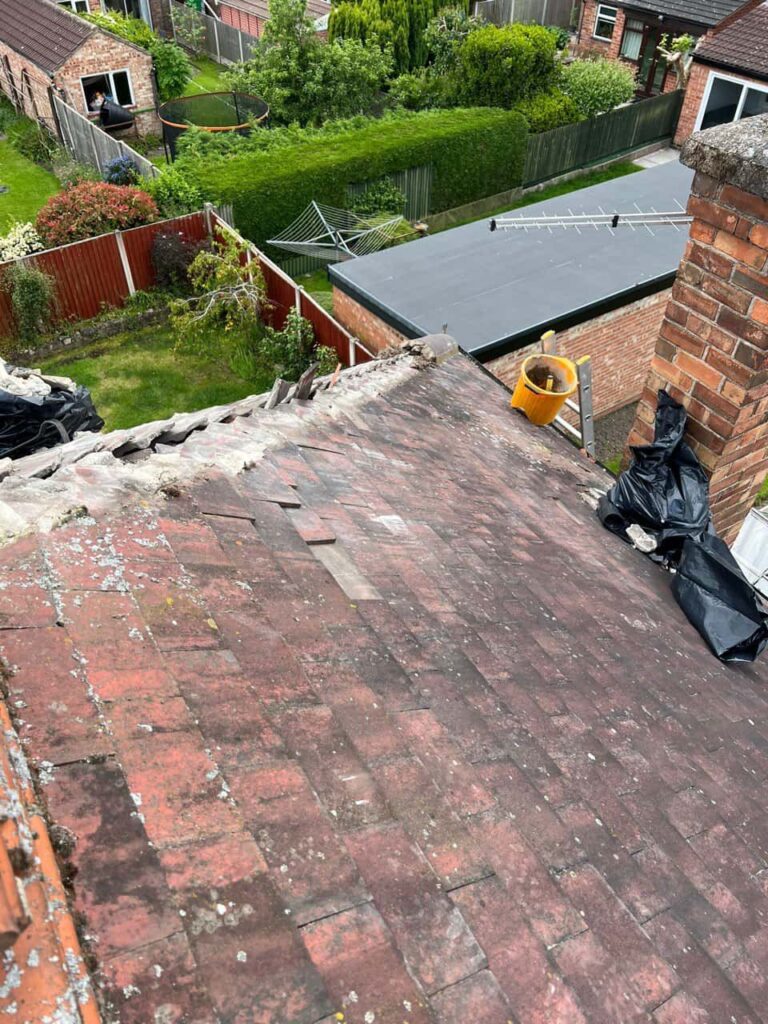Loose concrete roof tiles are more than just an aesthetic issue—they pose a genuine risk to your home’s structure, your safety, and anyone walking near your property. High winds, ageing mortar, and general wear can all contribute to tile movement. At Smethwick Roofing Repairs, we understand that homeowners in Smethwick, West Midlands want to know how to deal with this issue safely and effectively.
Why Loose Tiles Should Never Be Ignored
Even a single loose tile can compromise your roof’s ability to withstand rain and wind. Water ingress from displaced tiles can lead to:
- Rotting roof timbers
- Internal damp or mould
- Damaged insulation
- Increased heating costs
Worse still, in stormy conditions, a dislodged tile could fall, posing a serious danger to people and property below.
Step-by-Step Guide to Safe Repair
If you’re confident working at height and have the proper safety equipment, minor repairs may be carried out cautiously. However, always consider the risks before attempting any work yourself.
1. Assess the Situation from the Ground
Use binoculars to locate the loose or slipped tile. Do not climb onto the roof until you’re certain where the issue lies and whether it’s safe to proceed.
2. Use the Right Safety Equipment
- A sturdy ladder secured at the base and top
- Roof ladder or scaffolding for stability
- Safety harness if working on a steep pitch
- Sturdy gloves and non-slip footwear
Never attempt repairs in wet or windy weather.
3. Remove the Loose Tile
Gently lift the tiles above the loose one to gain access. Concrete tiles typically interlock, so care must be taken not to disturb adjacent tiles. Remove the faulty tile by sliding it out carefully.
4. Check the Batten and Underlay
Inspect the timber batten and underlay for damage or rot. If compromised, this is where DIY efforts should stop—professional intervention is necessary to prevent deeper structural issues.
5. Refit or Replace the Tile
If the tile is intact, slide it back into position ensuring it locks in securely. For additional stability, roofing clips or a small amount of tile adhesive (compatible with concrete tiles) can be used, although traditional dry fixing is preferred for ventilation and flexibility.
6. Final Inspection
Once the tile is secured, gently press around the area to ensure there’s no further movement. Visually confirm that the tile sits flush and properly interlocks with its neighbours.
When to Call a Professional
While small repairs may seem manageable, many roofing problems are deeper than they appear. If multiple tiles are loose, if mortar bedding is failing, or if you spot signs of internal leaks or sagging, it’s time to contact experienced roofers.
At Smethwick Roofing Repairs, we conduct safe, efficient repairs using the correct tools and methods. We’re familiar with the types of concrete tiles used in the West Midlands and can quickly assess whether a repair or replacement is needed—without compromising the integrity of your roof.
Conclusion
Fixing loose concrete roof tiles may seem like a straightforward task, but safety should always be the top priority. While it’s possible to carry out small repairs yourself, the risks of working at height and the potential for further damage make it a job best left to professionals. For peace of mind and reliable workmanship, contact Smethwick Roofing Repairs and let our local team ensure your roof is secure, weatherproof, and built to last.
Call us on: 0121 270 9 085
Click here to find out more about Smethwick Roofing Repairs
Click here to complete our contact form and see how we can help with your roofing needs.

